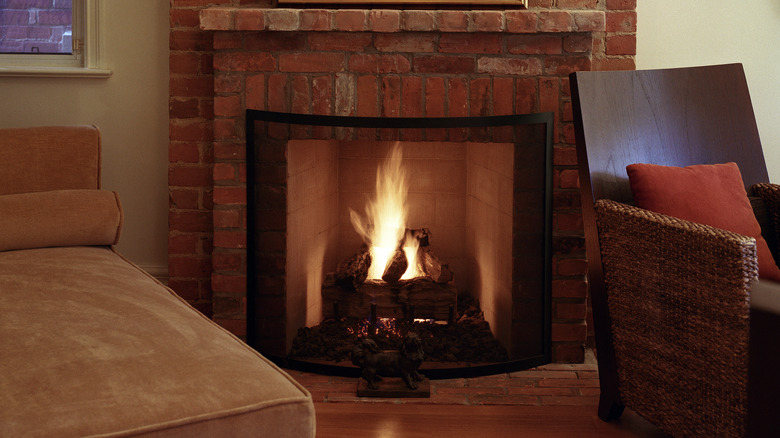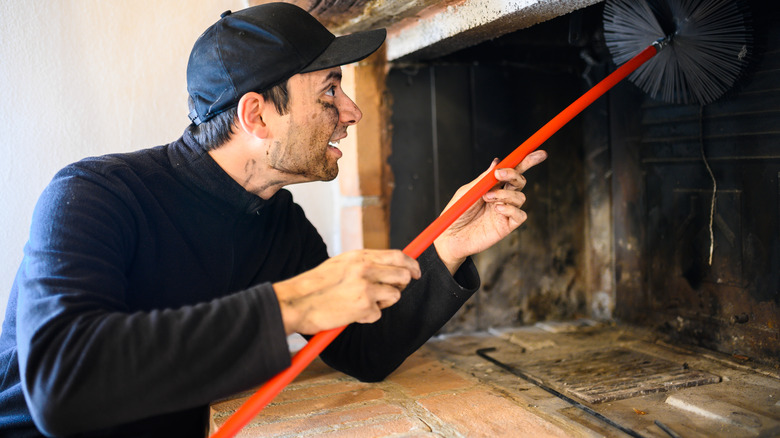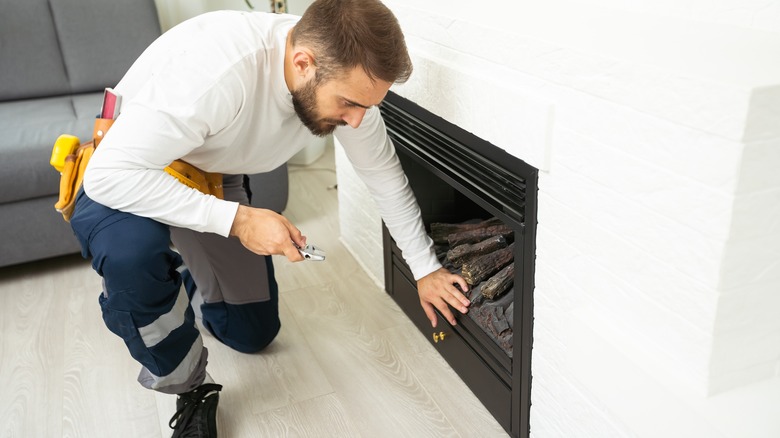Can Using Balloons In Your Chimney Keep Your House Warmer This Winter?
Fireplaces are gorgeous and sought-after additions to our homes, adding rustic charm to any space and giving the perfect place to gather around with family during cold winter days. But as much as our fireplaces keep us toasty when lit, they can be high maintenance and cause unwanted drafts to enter the home. Chimney balloons are often used to combat the heat and energy loss that fireplaces are susceptible to. These balloons are made of plastic, placed into the chimney, and inflated to prevent cold air from seeping in — and the warm air in our homes from leaking out. They are easy to use and insert into the chimney yourself — typically lasting up to a decade if left in place and not tampered with.
While chimney balloons are a go-to solution for airflow problems with our fireplaces, they have their own set of challenges and are often a temporary solution at best. If you frequently take the chimney balloon in and out to light your hearth, it will deteriorate quickly and require constant replacement. Chimney balloons do work to keep cold breezes from infiltrating our homes, but they are the most efficient solutions for those who do not often use their fireplace and plan to keep the balloon in place for long periods. Homes that love to burn wood to warm their house should consider more permanent solutions that will save time and money.
Do chimney balloons really work?
For all intents and purposes, chimney balloons do work to keep cold air from infiltrating our homes and causing our heaters to work overtime. The obstacle with these is that they are a short-term solution if you use your fireplace frequently. Depending on the type bought, chimney balloons can get pricey. Some cost up to $70 as they vary in size and materials, like silicone and polyurethane. Chimney balloons that are inserted and never removed can last over a decade and serve you well. However, when consistently removed to light the hearth, expect them to last only a few months. They must be removed before igniting a fire, and when forgotten, they quickly deflate and are ruined. They often aren't as durable or long-lasting as other solutions and are not always the most eco-friendly way to handle the issue.
Suppose you're experiencing an issue with your fireplace's airflow. In that case, it is likely due to a problem with the chimney's flue or damper, and a chimney balloon won't be able to remedy it outside of providing temporary comfort. Letting a larger potential issue fester will only be more damaging in the long run, especially if it's a leaking flue. If you're in a bind and need a quick and easy solution to stop cold air from permeating your home, a chimney balloon will be great in the short term. However, it's wise to quickly locate a more stable resolution.
Alternative methods to chimney balloons
Since chimney balloons aren't always a reliable fix for our fireplace drafts long-term, it's fortunate that other methods can be used to resolve the issue. First and foremost, you should get your fireplace serviced and determine the source of leaking air. If the flue is the problem, the chimney will need to be repaired sooner rather than later to avoid detrimental damage to the chimney. But it's just as likely that your chimney is missing a damper or needs a new one. Dampers allow you to open and close the vent and are much more effective than balloons. If you already have a damper, you may need to replace or clean it as, over time, it can get blocked from debris and other build-up.
Installing a damper can be expensive, with the damper itself usually costing between $200 and $300 — plus another couple hundred for labor. However, there are a few other routes you can take that are more affordable. EcoMaster produces chimney draught stoppers for $43 that are similar in cost and operation to chimney balloons but are much more durable and reusable. Rather than inflated plastic, which can be easily punctured, these draught stoppers are made of foam and create a long-lasting blockage for your chimney. Additionally, you could consider a draft guard, which covers the mouth of the fireplace and doesn't require sticking anything up the flue.


